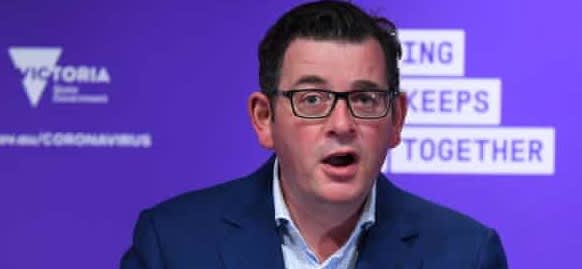Victorian Premier quits: Moving into the post-Daniel Andrews era
The resignation of Daniel Andrews marks the end of a highly successful political career. Having led the Labor Party to victory in three elections, Andrews was described as a giant of Victorian politics.
His approach to policy and leadership, however, were polarising, while his absence as leader may become problematic for Labor in the coming months.
Andrews became leader of the Labor Party after the Coalition won the 2010 state election. With popularity slipping for the Ted Baillieu, then the Denis Napthine-led Liberal Party, Andrews achieved a remarkable result by leading Labor to victory in 2014.
Shortly after becoming premier in 2014, he moved to scrap a major road project known as the East-West Link. The government also began work to remove level crossings across Victoria.
Andrews consolidated his power in Victorian politics when he led Labor to a comfortable win in the 2018 election. Dubbed by some as a “Danslide”, the result gave Andrews a sizeable majority in the Legislative Assembly.
Daniel Andrews has resigned as Premier of Victoria. Follow all the updates on our live blog. https://t.co/e4sNcnWrsa
— ABC News (@abcnews) September 26, 2023
In 2020, the Andrews government’s agenda was, like those of other governments, derailed by the onset of the COVID-19 pandemic.
As premier, Daniel Andrews implemented some of the lengthiest lockdowns and restrictions on movement in the world. While his uncompromising leadership trait had been controversial in policy areas such as infrastructure, his approach to COVID-19 restrictions led to a polarisation of the Victorian electorate.
Many in the community appeared to support the lockdown measures, while others voiced their opposition to his government’s approach, which also included protests and threats of violence against the Premier. Despite this polarisation, Andrews led Labor to yet another strong election victory in 2022, winning 56 seats out of 88 in the Lower House.
Despite having great electoral success, the Andrews government was continually questioned on matters of integrity and transparency. The so-called “Red Shirts” affair, and questions about the Labor Party’s operation and government decision-making became a regular feature of Victorian political debate.
Despite this, Andrews and Labor remained more popular with voters than the Opposition.
That is why his decision to step down might be a political circuit-breaker in this state. For so long, the Liberal Party in opposition has been consumed by its own internal battles over policy and personnel to the point that it has been unable to mount an effective case for change against Labor.
The party has been unsure of whether to take a more socially conservative policy approach, or to be a broader catch-all party. This has often presented the Liberal Party as a disunited and disjointed organisation, which may have impacted the party’s electoral success.
The reality is Daniel Andrews is leaving now because things are falling apart in Victoria and he knows it.
— John Pesutto (@JohnPesutto) September 26, 2023
Under Daniel Andrews, Victoria is broke and life has got harder for every Victorian. JP #springst pic.twitter.com/MeKXNtCWoK
With Andrews now gone, the Liberal Party has an opportunity to become more electorally competitive. The party can seek to reconnect with voters who abandoned it during the Andrews years if it can maintain organisational stability.
Whoever finds themselves replacing Andrews has a lot of work ahead. While the 2022 election result was overwhelmingly positive for Labor, there were some troubling signs.
In some traditionally safe seats, for example, Labor’s primary vote fell, suggesting some Victorians felt the party was no longer serving their interests. The new leader must seek to address this challenge to regain voters from the party’s base.
The new leader will also need to position themselves as a capable and effective leader who can lead Victoria in the post-Andrews period.
The decision by him to retire now will leave that person with three years to build rapport with the Victorian electorate, as well as demonstrate leadership capacity.
Moreover, the next leader will also have to rejuvenate and reinvigorate a party that has been in government for almost 10 years. By the time of the 2026 election, Labor will have been in government for 12 consecutive years. Warding off a sense of policy or personnel fatigue is going to be a top priority for the next Labor leader.
There will also have to be a by-election to elect the successor to Andrews in the electorate of Mulgrave that he’s has held since 2002. It’s a safe Labor seat held by approximately 10%, so it would be expected that whoever Labor selects as its candidate may be a potential leader of the party in future.
There is no other political figure who has towered over Victorian and National politics quite like Daniel Andrews, defying his critics and prevailing at times when his opponents were writing him off, writes Patricia Karvelas. https://t.co/JKjuPqYweD
— ABC News (@abcnews) September 26, 2023
Victorian politics will now move into the post-Andrews era. His absence will cause potential challenges for Labor, present new opportunities for the Opposition, and allow Victorians to reflect on one of the most electorally successful premiers in the state’s history.






